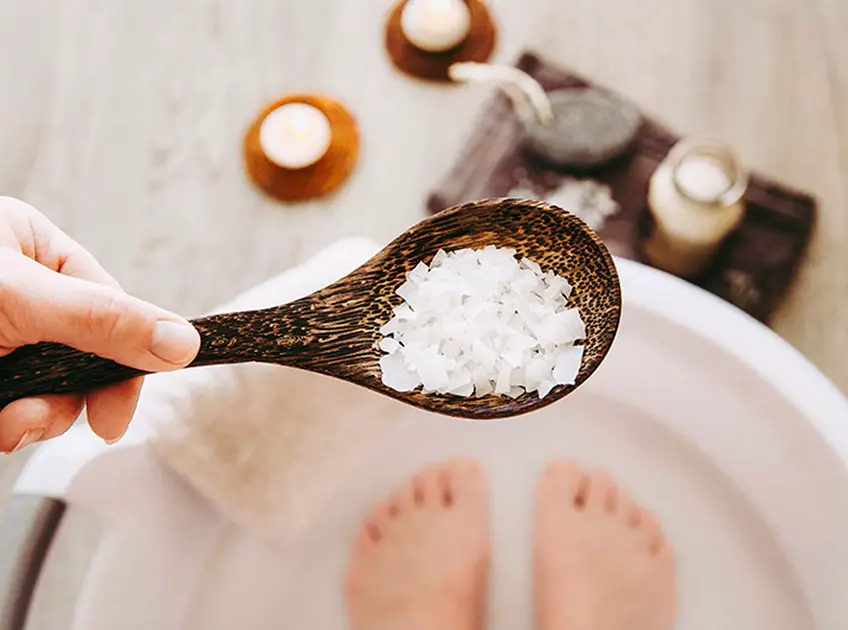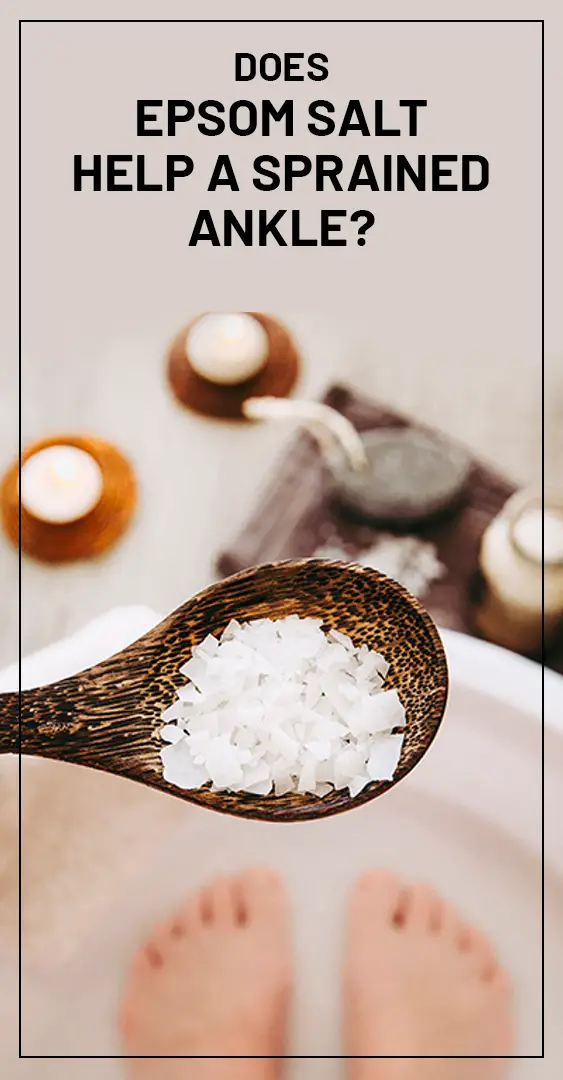
Important: This article is for informational purposes only. Please read our full disclaimer for more details.
Epsom salt has been used as a pain reliever and healing agent since time immemorial. The use of Epsom salt in reducing stress has also gained huge popularity in the recent past. It is an effective remedy for a sprained ankle.
Let’s dig a little deeper and understand how Epsom salt improves sprained ankle.
What Is A Sprained Ankle, And How Does It Occurs?
Sprained ankle occurs when the ankle rolls, turns, or twists in a way that tears or stretches the ligaments that hold the ankle bones together. Generally, it happens accidentally while playing, running, or doing some activity in which the ligaments are forced to move beyond their normal range of motion.(1)
If you face symptoms like pain while bearing weight, tenderness while touching, swelling, bruising, and instability in the ankle, it could be because of a sprained ankle.
Treatment for a sprained ankle is provided depending upon the severity of the injury. Of so many treatments and self-care methods, Epsom salt has been one of the most effective treatments for sprained ankles.
What Is Epsom Salt?

Epsom salt is a magnesium sulfate compound known to reduce inflammation and ease pain. It is beneficial for foot health and relieves any kind of foot stress.(2)
Even though the magnesium in Epsom salt doesn’t absorb through the skin and the level of magnesium in the body doesn’t change, it helps in inflammation.
Apart from treating a sprained ankle, Epsom salt also helps in-
- Reducing gout pain
- Eliminating foot odor
- Treating infection
How To Make A Foot Soak With Epsom Salt For A Sprained Ankle?

To make a foot soak with Epsom salt, you need to have a bucket (deep enough to dip your feet inside), warm water, and half a cup of Epsom salt. To add aromatherapy to this soak, you can add essential oils of eucalyptus, lavender, peppermint, or anything that calms your mood.(3)
Step 1: Fill bucket or bathtub with lukewarm water. The water should be deep enough to soak your feet.
Step 2: Add Epsom salt to the water and let it dissolve.
Step 3: Soak your feet in this water for at least 30 to 60 minutes.
For a sprained ankle, it is essential to soak at least three times a week for a minimum of 12 to 15 minutes each time. If the sprain is severe, you can increase the duration and number of Epsom salt soaks to get the benefit. However, if you use Epsom salt water for exfoliation, removing splinters, or treating fungal infections, repeat the process twice a week for the best results.
Epsom salt water can dry your feet. Therefore, once you are done soaking, moisturize your feet with a gentle moisturizer to keep them soft and smooth.
Benefits Of Magnesium In Epsom Salt
Magnesium is essential for muscles and nerves to work properly. It helps to relax the muscles and flush out the lactic acid that often causes tenderness in the muscles. At the same time, magnesium reduces inflammation.(4)
Even though studies have proved that the skin doesn’t absorb magnesium when exposed to Epsom salt, it helps reduce pain and inflammation in certain ways.
Benefits Of Sulfate In Epsom Salt
Research has proved that Epsom salt is useful in joint and muscle maintenance. The body requires certain proteins that it produces in the presence of sulfates. Moreover, sulfates remove toxins from the body that often hinders muscle repair and the healing process.(5)
Final Words
Epsom salt is a great home remedy for a sprained ankle. It has the properties to soothe sore muscles and connective tissues. Also, it helps with joint stiffness.
However, it is better to consult your doctor if you feel skin irritation and itching. At the same time, if you are pregnant, have diabetes, heart problems, or have kidney diseases, discuss this with your doctor before using Epsom salt for sprained ankles.
You Might Also Like:
- How To Get Rid Of Bruises With Toothpaste
- Epsom Salt While Pregnant: Benefits and How to Do?
- Epsom Salt Bath: Benefits, Recipes and Risks
- Is Vinegar and Epsom Salt Good for Toenail Fungus?
- Foam Roller Exercises – 9 Best Moves and Its Benefits
- How To Lose Weight With Epsom Salt?
















